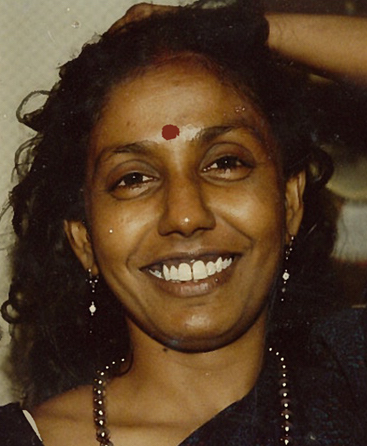Rajani’s Questions The Tamil Elite Have Refused To Answer

 Rains and early gloom harbinger the dying year. Fields are ploughed and sown in readiness for the earth’s renewal and the yield of her bounty. It was at such a time that Rajani Thiranagama was killed by the LTTE twenty-nine years ago. Her questions and aphorisms often challenged our assumptions at their core. The following Appeal authored by her in October 1988 appeared in Laying Aside Illusions signed by 50 academics in the common room of the University of Jaffna:
Rains and early gloom harbinger the dying year. Fields are ploughed and sown in readiness for the earth’s renewal and the yield of her bounty. It was at such a time that Rajani Thiranagama was killed by the LTTE twenty-nine years ago. Her questions and aphorisms often challenged our assumptions at their core. The following Appeal authored by her in October 1988 appeared in Laying Aside Illusions signed by 50 academics in the common room of the University of Jaffna:
“We have to examine not only our relations with the Indian and Sri Lankan States, but also ourselves. Our obeisance to terror within the community, our opportunism and lack of principles in the face of many internal killings, have made it easy for external forces to use the same weapons to control us. In the face of our acquiescence to anti-democratic tendencies within the community, our plea for democracy becomes a meaningless exercise. Many individuals and young persons who voiced criticism of the political forces have been victimised, driven away, or killed while we looked on.”
Displayed in that very common room are photographs of our late academics since the inception of the University. The exclusion of Rajani’s picture has been commented upon by visitors for many years. The university authorities in 2014 (I think in retrospect it is wrong to single out the Vice Chancellor) blocked the observance of the 25th Anniversary of her murder while in harness. Her conducting examinations to a timetable made it easy for the killers to plan her murder.
A short stroll away from the common room, the 31st Anniversary of the LTTE’s Thileepan, whose ‘Gandhian’ fast to death under duress, to enable the Leader to snatch a political prize, was, this fall, celebrated as act of martyrdom in a grand ceremony; where the Vice Chancellor gave the lead. A few days later the installation of a monument to the LTTE-inaugurated ‘Tamils Arise’ (Pongu Thamil), was likewise graced by senior university officials.
The result is surreal. These proceedings take place under the tolerant eye of the Sri Lankan security forces, the same forces that in 2014 stopped the Medical Students Union’s commemoration of Rajani by issuing a threat to the Dean by phone.
The same university officials, who are prominent at current ceremonies glorifying the brutal extreme of Tamil Nationalism, put on a different face when dealing with the powers that be in Colombo, by whose tolerance the University continues its course of congenial decay. Its keeping out well qualified academics in order to reinforce a closed tradition of mediocrity, is in keeping with Pongu Thamil and its cult of heroism by which the most intimate and poignant aspects of our history have been reduced to gossip. That is one reason why Rajani is anathema.
As a medical doctor in 1982, when hardly anyone else was willing, Rajani readily went in the night to nurse and save the life of Seelan, a favourite of the LTTE leader, who suffered an accidental gunshot injury (see Palmyra Fallen). About two years later in England, she learnt of the internal brutality and intolerance of the movement, and how Seelan was driven to harbour a death-wish, bitterly regretting his actions: In particular his murder of PLOTE’s Sundaram (‘who was a freedom fighter like me’) at the Leader’s behest. Seelan had remained in a marked camp in Themaratchy despite urgent entreaties to vacate and was ambushed by the Army in July 1983.

